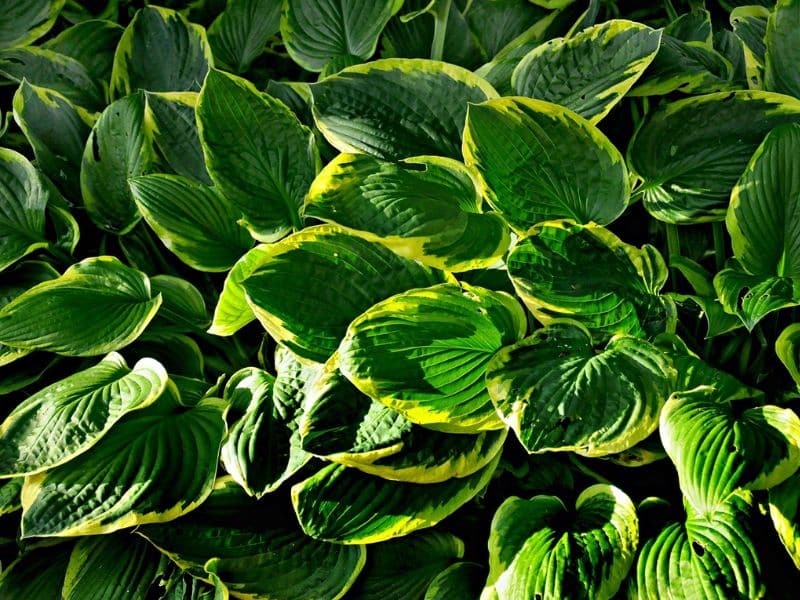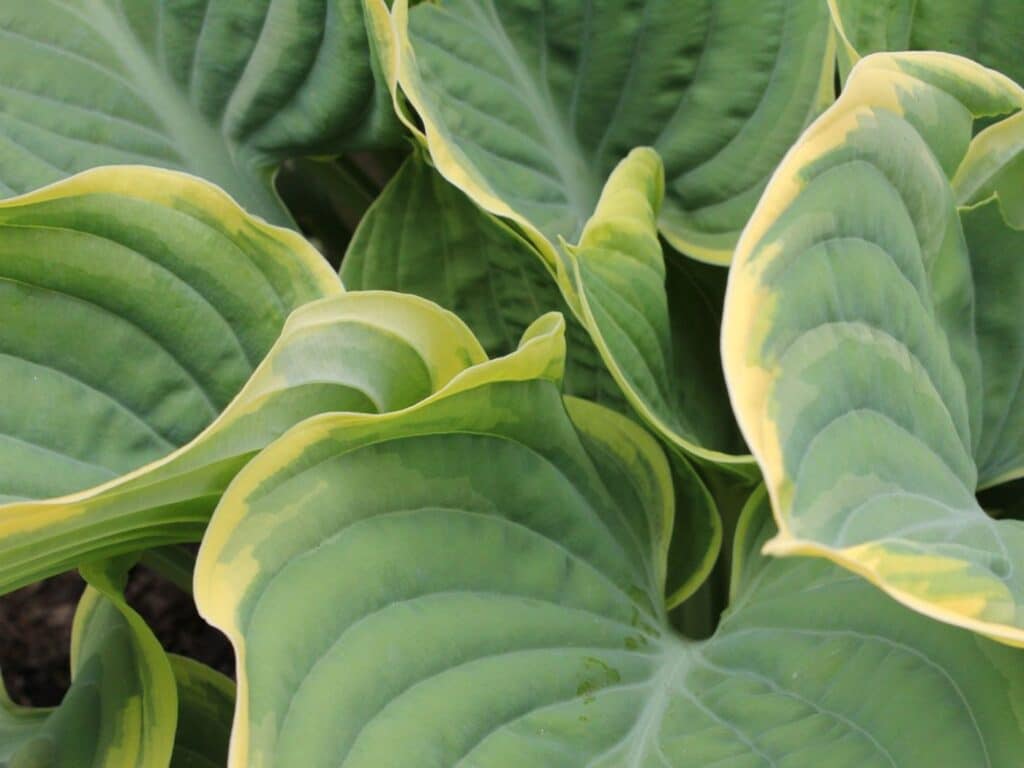There’s a certain tranquility to be found in the lush, verdant leaves of the hosta plant. But what happens when those rich green leaves start to turn yellow? It’s a sign that something’s amiss, and it’s time to play plant detective.
Yellowing hosta leaves don’t always signal disaster, but they do warrant investigation. The culprits could range from excessive sunlight to incurable diseases. So, if you’re keen to discover why your hosta leaves are taking on a yellow hue, you’re in the right place.
Whether you’re a seasoned gardener or a green-thumbed novice, understanding the nuances of plant health can be a game-changer. Let’s delve into the world of hostas and uncover the secrets to maintaining their vibrant green allure.
Causes of Yellowing Hosta Leaves
When your Hosta leaves begin to yellow, it’s important to identify the root cause and address it. A variety of factors can result in yellowing Hosta leaves, ranging from environmental stressors to nutrient deficiencies and watering problems.
Environmental Stressors
Factors such as soil composition, lighting conditions, and temperature fluctuations can have a significant impact on your Hosta’s health. If your hosta is planted in heavy, clay-like soil, it may suffer from poor drainage, leading to yellow leaves.
Too much sunlight can result in leaf discoloration as well. As Hostas thrive in shady locations with indirect light, relocating a sun-stricken Hosta to a shadier spot may aid in ‘greening’ the yellowed leaves.
Nutrient Deficiencies
Hostas, like any other plants, require a variety of nutrients to grow and flourish. Yellow leaves may well indicate a nutrient deficiency. Proper soil preparation, including the addition of nutrient-rich organic compost, can provide the plant with necessary nourishment.
Watering Issues
Overwatering or underwatering your Hosta may well lead to yellow leaves. Damp soil is ideal for Hostas, so try to maintain a consistent watering routine to keep the soil moist.
Conversely, too much water, especially in shaded areas, can lead to issues like stem and crown rot, signified by yellowing leaves. Regular checking of soil moisture can go a long way in maintaining the radiant green leaves of your Hosta.
Common Diseases Affecting Hostas

Delving further into what may be wrecking havoc on your hostas, a number of diseases could be the culprits. Let’s elucidate these problematic infections.
Bacterial and Fungal Infections
Diseases caused by bacteria and fungi may contribute to your hosta leaves’ yellow hue. Bacterial soft rot, for example, can cause leaves to yellow and emit a foul odor, a telltale sign of the decay of the lower leaves.
This infection sprouts typically from a wound on your plant caused by undue plant handling, harsh winters, or even simple gardening operations like division or planting. Sadly, the only solution is to eliminate all infected plants and thoroughly cleanse your gardening tools.
Fungal infections, particularly one named anthracnose, also plague hostas frequently. Characterised by irregular white to tan spots with a brown border, this disease thrives in warm, wet conditions. Again, prevention is key – good plant spacing can help deter its development.
Viral Diseases
Moving on towards viral afflictions, these can inflict equally significant damage to your hostas. Hosta Virus X, in particular, is notoriously harmful. Often lurking incognito for years, its eventual symptoms include a yellow mosaic pattern forming on the leaves and blurring of variegated leaf borders.
Transmission often occurs via infected sap contact during plant cuttings. Unfortunately, removal and destruction of afflicted plants are necessary once the virus is detected.
Pest Infestations Leading to Yellow Leaves
A change in leaf color can also be indicative of pest infestations. For example, hosta leaf nematodes, microscopic roundworms, feed and reproduce inside the tender tissue of the leaves, leading to yellow discoloration and subsequent browning. Spider mites, though more of an annoyance, can also weaken hostas and contribute to their leaf discoloring.
In all these scenarios, it’s important to recognize the symptoms promptly, address the issue through appropriate plant care practices, and learn preventive strategies to ensure your hostas live a healthy life.
Care Tips to Prevent Yellow Leaves
Appropriate Sunlight and Shade
Hostas are fond of moderate sunlight and shade. It’s advisable to observe the response of your plant to sunlight. If yellowing or crispy leaves appear, it may well suggest too much sun exposure.
Hostas are surprisingly resilient and can tolerate more sunlight if adequately watered. Hence, ensure your hosta receives an optimal balance of sunlight and shade.
Soil Quality and Proper Drainage
The ideal environment for hostas involves good quality compost and effective drainage. Keep a close eye on the soil condition, as it may well look wet at the surface but could be dry underneath.
Test the soil moisture by pressing a finger into the soil. Use a slow and deep watering approach if it feels dry, avoiding just a quick surface spray. Combine this with a regular watering schedule, especially during periods of hot weather.
Balanced Fertilization
Hostas also need proper nourishment to thrive. Yellowing leaves could hint at nutritional deficiency. Balanced fertilization, using a quality plant feed, can offer the essential nutrients needed. Always follow the feed instructions to avoid over-fertilization, which can harm the plant.
Seasonal Changes and Hosta Leaf Yellowing

Befittingly engaging with the rhythm of nature, your hostas may reflect changes across the seasons. Understanding what is going on with your hostas during each season can provide some average solutions for the problem of yellowing leaves.
Understanding Dormancy Effects
As autumn sets in, your hostas, armed with their natural survival instincts, prepare for the oncoming cold weather spell. They begin their journey into dormancy, a hibernation of sorts for plants.
During this phase, it’s normal for your hostas to showcase yellow or brown leaves. It’s simply their way of conserving energy, directing all their resources to the roots to brave the winter. Now, before you rush to contest this leaf discoloration, take a step back, remember it’s part of their survival mechanism and your intervention isn’t required.
Natural Life Cycle of Hostas
Equally significant in the ecosystem of your hostas is their natural life cycle. As in any living beings, seasons of growth precede those of slowness. Summer sees your hostas in their prime, with luxuriant green leaves carpeting your garden.
Followed by a slow transition in late summer to autumn, leading to apparent signs of fatigue such as yellow leaves. Take this as an indicator of your hostas preparing to enter their dormancy phase again.
Once welcomed back into spring, they’ll rebound, sprouting new lush, green leaves, leaving you rather satisfied. Accept this natural cycle, synchronize your interventions to it, and you’re certain to raise healthy hostas with minimal leaf yellowing.
Diagnosing Hosta Leaf Problems
Identifying the Signs of Damage
Diagnosis starts with the close observation of your hosta plant’s symptoms. Crispy leaves may well result from insufficient watering or excessive sun exposure.
Be mindful: even if the surface seems damp, the soil beneath could be parched. Probe a finger into the soil – if it feels dry just under the surface, your hosta may well be thirsty.
Too much sun, conversely, may make the leaves lose color. Prevent further harm by watering your hosta regularly, trimming affected leaves, and adjusting the plant’s sunshine duration.
Yellowing hosta leaves potentially signal heavy, improperly draining soil, or overwatering. Test your soil’s consistency: it’s likely too dense if it maintains its shape after squeezing. Lighten up such soil using coconut coir or peat.
In contrast, if the soil texture seems okay, the culprit may well be excessive watering, especially in shaded hostas. Apart from yellowing, overwatering may cause stem and crown rot. Stay vigilant for signs of leaf discoloration and wilting, for these may well indicate these ailments.
When to Seek Professional Advice
It’s critical to assess when your problem lies beyond DIY interventions. If leaf problems persist despite adequate watering and soil adjustments, professional help may well be in order.
Certain issues, like petiole rot, demand expert attention. Species selection also helps manage sunlight requirements – brighter-colored hostas like Dancing Queen can bear more sun than their darker green or blue counterparts.
But if discoloration or wilting still occurs, getting a professional opinion could offer solutions you hadn’t considered. Remember, your hosta’s health hangs in the balance – there’s no shame in requesting expert assistance to protect it.
Up next:







